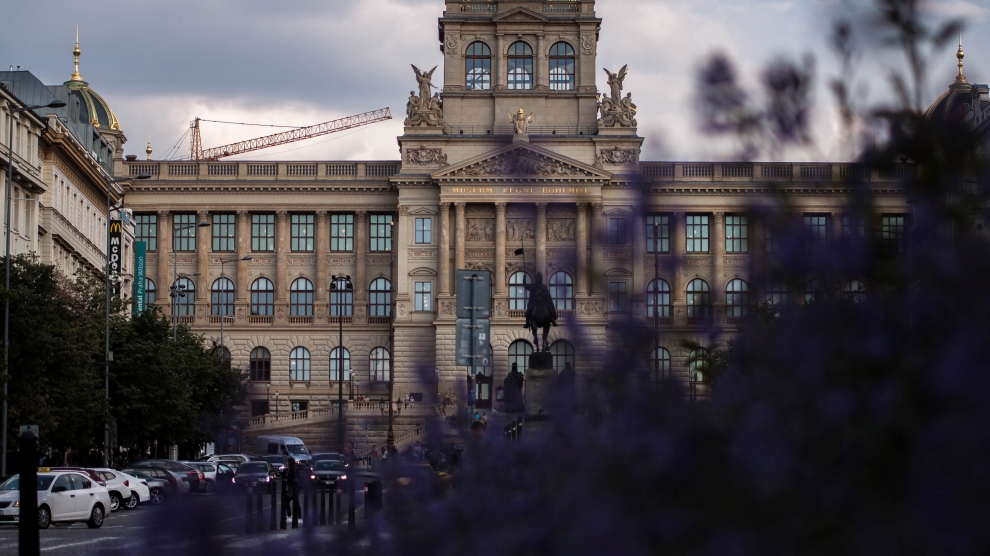While the coronavirus pandemic might have forced almost the whole of emerging Europe into lockdown, this does not mean that we have stop enjoying cultural activities.
With all governments announcing restrictions on gatherings, stay-at-home orders or even nationwide quarantines, a number of museums in the region have announced that they will be offering virtual tours to provide people with the possibility to enjoy the cultural heritage of emerging Europe without stepping outside the house.
We have taken a look at some of them, and have come up with a list of the best.
The National Museum in Prague started moving its collections online last week and the first two exhibitions have already been made available. One of them is themed on the events of the Velvet Revolution and the series of events both before and after 1989 that transformed communist Czechoslovakia into a democratic and free society, while the other, titled Labyrinth of Information and Printing Paradise, is an exhibition marking 300 years since the foundation of the first Czech newspaper.
“Almost immediately after the decision that the museum must be closed, my colleagues and I were given a task that also became a major challenge,” wrote the Prague Monitor, quoting Michal Stehlík, the museum’s deputy director for exhibitions and collections, who added that he was now working on special education projects.
“We care for and guard the cultural heritage of our country, work on research projects, and also want to be in touch with the public and constantly present collections, scientific results, help with education and the world,” added the museum’s director Michal Lukeš.
Other Czech institutions, such as the Czech Museum of Music and the Náprstek Museum of Asian, African and American Cultures, are expected to follow suit in the coming weeks.
Similar to the Czech example, the National Museum of Serbia has also made available two online exhibitions, with one a virtual tour of the artwork of Ivan Meštrović, a renowned Croatian sculptor, while the other introduces the museum itself and its famous caryatids.
“Guided by the desire to enable all those interested to get acquainted with the extraordinary cultural heritage and stories the artifacts of the museum have to tell, during the coming period, we invite you to visit our website and social networks,” says the museum’s management.
Also in Serbia, the Kalemegdan Museum of Natural History has come up with three online exhibitions. Centered around the discovery of the lunar surface, the first offers a take on the relationship between Earth and the Moon. The second focuses on poisonous plants and animals, while the third is themed around the biological processes of forests and the life cycle of trees.
Across Romania, more than 20 museums are now – or will be – offering virtual visits to their audiences.
At the National History Museum of Romania, several exhibitions can be visited in both 2D and 3D formats, including the country’s national treasure, such as the crown jewels of the country’s royal family. Meanwhile, the Romanian Peasant Museum and the National Village Museum offer online displays of Romanian folklore and rural life.
Staying in Bucharest, exhibitions at the galleries of the National Museum of Art (MNAR) will also go online, offering a virtual glimpse at Romanian art from the mid-19th century to the late 20th century and displaying the works of the country’s most famous artists – Ioan Andreescu, Theodor Pallady, Theodor Aman and Nicolae Grigorescu, among others. The MNAR’s other galleries – the Romanian Medieval Art Gallery, the Romanian Modern Art Gallery and the European Art Gallery – will also do the same.
National history is a key element of the online exhibitions offered at the National Museum of Hungary, as well. The institution’s permanent exhibits – including the country’s history in two detailed sections, as well as the Seuso Treasures, a collection of items from Roman-age Hungary – can be visited on its website.
Under the hashtag #zostańwdomu (#stayathome), several Polish cultural institutions have joined a campaign to launch or expand their online offerings. One such institution is the outstanding Warsaw Uprising Museum that has started delivering live broadcasts on Facebook about the country’s often troubled history by using the museum’s exhibits.
One Fridays and Saturdays, the Zachęta National Gallery of Art in Warsaw is running online tours and is in the process of preparing 3D exhibitions. “In this symbolic way, we will try to show you everything that is waiting for you at the Zachęta once we reopen,” the gallery said, pointing to how much they – just like everyone else – is waiting for life to get back to normal.
Another Polish institution, the POLIN Museum of the History of Polish Jews is also inviting people to experience its online exhibitions.
Kraków’s famous royal castle, Wawel, has also launched a series of museum stories online with short videos introducing the various items within the castle, its gardens and the stories behind Wawel, all told by its curators.


[…] Europe: History in the time of coronavirus: Virtual tours of emerging Europe’s museums. “With all governments announcing restrictions on gatherings, stay-at-home orders or even […]